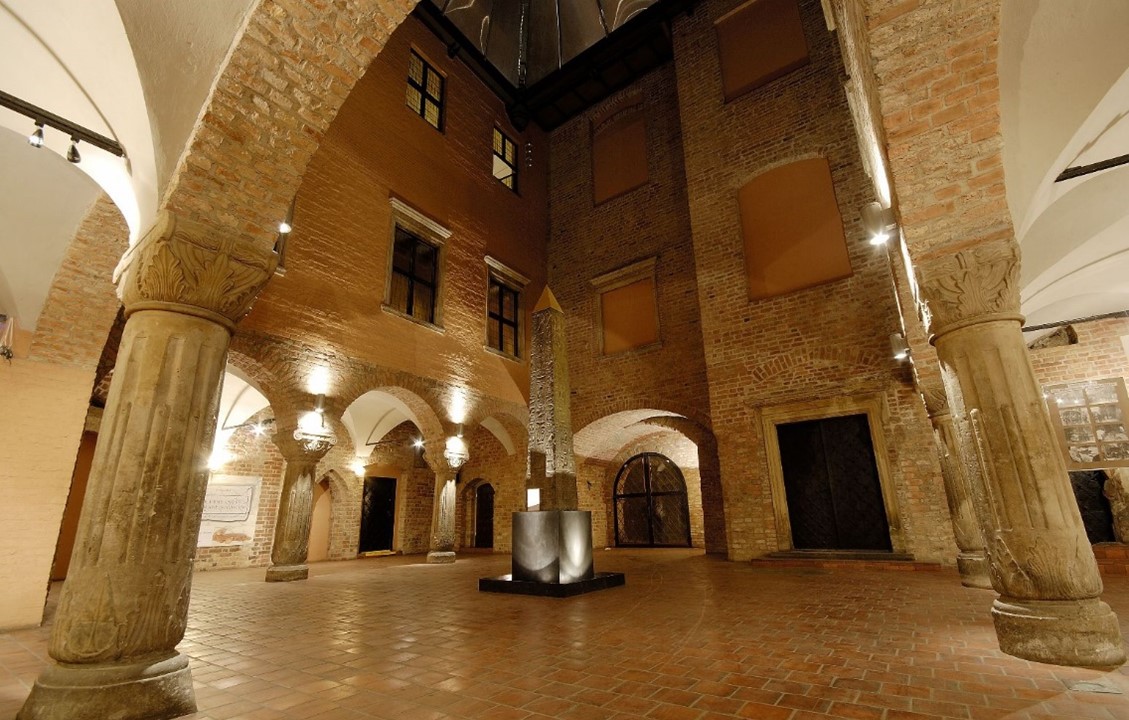Exhibitions
Departments

The origins of the Archaeological Museum in Pozań can be traced back to the second half of the nineteenth century, when Wielkopolska (Greater Poland), like the whole Europe, witnessed a rapid increase in interest in antiquity, including archaeology. At the same time, the difficult situation of Poles under the partitioners' rule, the lack of statehood and freedom, along with the threat of losing the national identity encouraged the establishment of various civic associations that supported Polish culture, science, and economy on behalf of the former state. This role – a patron of Polish science and culture – was played by the Poznań Society for the Advancement of Arts and Sciences, established in 1857.
On 23 September 1857, the Museum of Polish and Slavic Antiquities in the Grand Duchy of Poznań was established at the Society. In 1882, it changed its name to the Mielżyński Museum in recognition of the great contribution of Counts Mielżyński to its development. The Museum collected various national souvenirs, e.g. archaeological finds acquired both from donors and from archaeological excavations.
Over time, the Museum and the Society changed the seat several times. First, it was located in Raczyński Library (1857-1870), then Hotel Bazar (1870-1882), and later in the building located at Młyńska Street (now Mielżyńskiego Street).
The museum collections were cared for by conservators (the equivalents of today’s curators). These functions were performed successively by teacher Maksymilian Studniarski (1858-1860), teacher Albin Gorecki (1860-1866), lawyer and journalist Władysław Wierzbiński (1866-1868), teacher and writer Hieronim Feldmanowski (1868-1882), Klemens Kantecki (1882-1885), historian, philologist Bolesław Erzepki (1885-1923) and specialist in prehistory Józef Kostrzewski (1914 - 1923).
In the first years of the Museum's existence, Leon Wegner, the Society’s secretary, also played a significant role in the development of the museum. Already at the end of the 19th century, the Mielżyński Museum had the largest archaeological collection of scholarly societies operating in the contemporary Prussian state. Such a good result was obtained mainly thanks to the support of Polish landowners and clergy, many of whom donated their private archaeological finds to the museum.
Members of the Society for the Advancement of Arts and Sciences participated in archaeological research, thus enlarging the museum’s collection. Among the acquired artefacts were unique objects, such as, for example, oxen from Bytyń dating to the early Bronze Age, or items from sites investigated according to the highest research standards of the time (e.g. materials from Manieczki explored by Antoni Białecki in 1858). In order to achieve the highest possible scientific level, the Archaeological Commission was established at the Society (from 1885 renamed the Archaeological Section). Although it operated only periodically, it became a centre of exchange of ideas, inspiring its members to undertake excavations and publish their results. The most well-known members of the Commission at the beginning of its existence were Antoni Białecki and Kazimierz Szulc, and later also Władysław Jażdżewski and Hieronim Feldmanowski. Following the establishment of the Section in 1885, it was attended by Klemens Koehler, Romuald and Bolesław Erzepki, Władysław Łebiński, Wincenty Zenkteller, Augustine Kalk, Ignacy Zakrzewski and Albin Węsierski. Many of those scholars contributed greatly to the development of archaeological research in Wielkopolska (Greater Poland) and supported the Museum with their private collections.
Jarmila Kaczmarek
The article was published in Archeological Museum in Poznan. History and the present day, ed. Maciej Przybył.
Nasza strona internetowa używa plików cookies (tzw. ciasteczka) w celach statystycznych, reklamowych oraz funkcjonalnych. Dzięki nim możemy indywidualnie dostosować stronę do twoich potrzeb. Każdy może zaakceptować pliki cookies albo ma możliwość wyłączenia ich w przeglądarce, dzięki czemu nie będą zbierane żadne informacje. Dowiedz się więcej jak je wyłączyć. OK, Rozumiem

